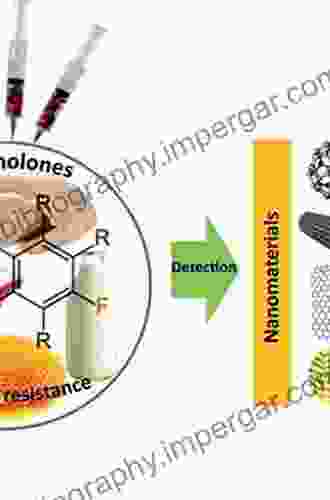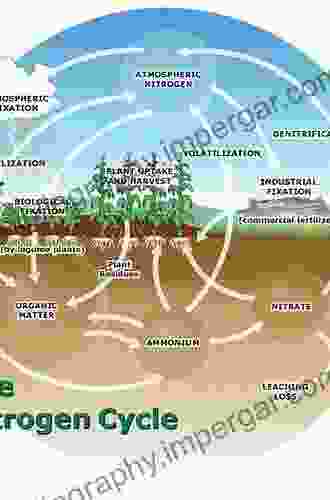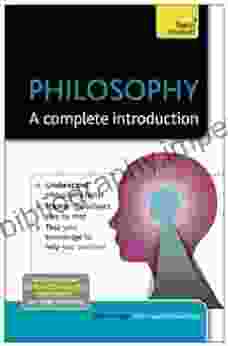Chemical Sensors and Biosensors: Unlocking the Power of Chemical Sensing

In a world where everything we touch, eat, and breathe has a chemical composition, the ability to sense and quantify chemicals has become indispensable. Chemical sensors and biosensors, powerful analytical tools, have revolutionized various fields, from medicine and environmental monitoring to food safety and industrial automation. This comprehensive article will explore the fundamentals and diverse applications of chemical sensors and biosensors, providing a deep dive into their transformative capabilities.
Fundamentals of Chemical Sensors and Biosensors
Chemical sensors and biosensors are devices that convert chemical signals into measurable electrical or optical signals. They consist of a recognition element that selectively interacts with the target analyte (chemical substance) and a transducer that converts the interaction into a quantifiable signal.
4.8 out of 5
| Language | : | English |
| File size | : | 32608 KB |
| Text-to-Speech | : | Enabled |
| Screen Reader | : | Supported |
| Enhanced typesetting | : | Enabled |
| Print length | : | 577 pages |
| Lending | : | Enabled |
Chemical sensors typically rely on electrochemical, optical, or mass-sensitive transduction mechanisms, while biosensors employ a biological recognition element, such as an enzyme, antibody, or DNA probe, that specifically binds to the target analyte.
Electrochemical Chemical Sensors
Electrochemical sensors measure the changes in electrical properties (e.g., resistance, capacitance, or current) resulting from chemical reactions. Examples include:
* Amperometric Sensors: Measure the current generated by the oxidation or reduction of the analyte at a working electrode. * Potentiometric Sensors: Measure the potential difference between a reference electrode and a sensing electrode exposed to the analyte. * Conductometric Sensors: Detect changes in conductivity caused by the presence or absence of specific ions.
Optical Chemical Sensors
Optical sensors rely on light-based interactions to detect chemical species. They include:
* Colorimetric Sensors: Utilize changes in color or absorbance to quantify analytes. * Fluorescence Sensors: Measure changes in fluorescence intensity or emission wavelength upon the interaction of the analyte with a fluorescent dye. * Surface Plasmon Resonance (SPR) Sensors: Detect the changes in the refractive index at the surface of a metal film, which is sensitive to the presence of specific molecules.
Mass-Sensitive Chemical Sensors
* Quartz Crystal Microbalance (QCM) Sensors: Detect mass changes by measuring the changes in resonant frequency of a quartz crystal. * Surface Acoustic Wave (SAW) Sensors: Utilize surface acoustic waves to detect mass changes on the sensor surface.
Biosensors - Combining Biology and Chemistry
Biosensors combine the specificity of biological recognition elements with the signal transduction capabilities of chemical sensors. They are highly sensitive and selective, allowing for the detection of specific biomarkers, pathogens, or toxins.
* Enzymatic Biosensors: Utilize enzymes as recognition elements to detect specific substrates. * Immunosensors: Employ antibodies to selectively bind and detect target antigens. * DNA Biosensors: Use DNA probes or microarrays to detect specific DNA sequences. * Cell-Based Biosensors: Utilize living cells as recognition elements to detect specific stimuli or substances.
Diverse Applications of Chemical Sensors and Biosensors
Chemical sensors and biosensors find countless applications across various domains:
* Analytical Chemistry: Perform quantitative and qualitative analysis of chemicals in environmental, food, and biological samples. * Biomedical Engineering: Detect and monitor biomarkers, diagnose diseases, and guide therapeutic interventions. * Environmental Monitoring: Measure pollution levels, monitor air and water quality, and assess soil contamination. * Healthcare Diagnostics: Detect pathogens, perform genetic testing, and conduct rapid diagnostic tests for infectious diseases. * Food Safety: Ensure food quality, detect adulteration, and monitor foodborne pathogens. * Industrial Automation: Control chemical processes, monitor industrial emissions, and optimize production efficiency.
Case Studies and Real-World Examples
* Glucose Biosensors for Diabetes Management: Wearable glucose sensors allow diabetics to continuously monitor their blood sugar levels, improving glucose control and reducing complications. * Portable Water Quality Sensors for Environmental Monitoring: Handheld devices equipped with chemical sensors enable onsite water testing, providing real-time data on pollution levels. * Immunosensors for Point-of-Care Diagnostics: Rapid diagnostic tests based on immunosensors provide fast and accurate detection of infectious agents at the patient's bedside. * Biosensors in Food Safety: Biosensors detect and quantify foodborne pathogens, such as Salmonella and E. coli, ensuring food safety and preventing contamination outbreaks.
Chemical sensors and biosensors are powerful tools that have revolutionized numerous fields by enabling the detection, quantification, and analysis of a wide range of chemical substances. Their fundamental principles and diverse applications highlight their transformative capabilities in healthcare, environmental monitoring, food safety, industrial automation, and beyond.
The comprehensive guide, "Chemical Sensors and Biosensors: Fundamentals and Applications," delves deeper into the technical aspects, design principles, and emerging applications of these remarkable devices. This book provides a valuable resource for researchers, scientists, engineers, and anyone seeking a comprehensive understanding of chemical sensing technologies and their impact on modern society.
4.8 out of 5
| Language | : | English |
| File size | : | 32608 KB |
| Text-to-Speech | : | Enabled |
| Screen Reader | : | Supported |
| Enhanced typesetting | : | Enabled |
| Print length | : | 577 pages |
| Lending | : | Enabled |
Do you want to contribute by writing guest posts on this blog?
Please contact us and send us a resume of previous articles that you have written.
 Book
Book Novel
Novel Page
Page Chapter
Chapter Text
Text Story
Story Genre
Genre Reader
Reader Library
Library Paperback
Paperback E-book
E-book Magazine
Magazine Newspaper
Newspaper Paragraph
Paragraph Sentence
Sentence Bookmark
Bookmark Shelf
Shelf Glossary
Glossary Bibliography
Bibliography Foreword
Foreword Preface
Preface Synopsis
Synopsis Annotation
Annotation Footnote
Footnote Manuscript
Manuscript Scroll
Scroll Codex
Codex Tome
Tome Bestseller
Bestseller Classics
Classics Library card
Library card Narrative
Narrative Biography
Biography Autobiography
Autobiography Memoir
Memoir Reference
Reference Encyclopedia
Encyclopedia Francesc Zamora
Francesc Zamora Gary D Solis
Gary D Solis Frank Hopkinson
Frank Hopkinson Felicity Jones
Felicity Jones Theodor Mommsen
Theodor Mommsen Louise Davidson
Louise Davidson Florinel Gabriel Banica
Florinel Gabriel Banica Gary D Christian
Gary D Christian Jen Lucas
Jen Lucas Forrest Lesch Middelton
Forrest Lesch Middelton John Woodrow Cox
John Woodrow Cox Keith Crane
Keith Crane Gabi Coatsworth
Gabi Coatsworth Farah Qarmout
Farah Qarmout Pam Marshalla
Pam Marshalla Frederick Neuhouser
Frederick Neuhouser Frank Thomas Smith
Frank Thomas Smith Gary R Edgerton
Gary R Edgerton Frater Albertus
Frater Albertus Madeleine Albright
Madeleine Albright
Light bulbAdvertise smarter! Our strategic ad space ensures maximum exposure. Reserve your spot today!

 Stuart BlairUnlock the Superpowers Within: Embark on a Transformative Journey with "Your...
Stuart BlairUnlock the Superpowers Within: Embark on a Transformative Journey with "Your...
 Brady MitchellUncover the Unpaved Path: Explore the First Road to Texas from the North Red...
Brady MitchellUncover the Unpaved Path: Explore the First Road to Texas from the North Red... Milton BellFollow ·12.9k
Milton BellFollow ·12.9k Robert ReedFollow ·11.1k
Robert ReedFollow ·11.1k E.E. CummingsFollow ·12.6k
E.E. CummingsFollow ·12.6k Howard PowellFollow ·7.5k
Howard PowellFollow ·7.5k Dave SimmonsFollow ·17.9k
Dave SimmonsFollow ·17.9k John Dos PassosFollow ·17.8k
John Dos PassosFollow ·17.8k Hugh ReedFollow ·12.8k
Hugh ReedFollow ·12.8k Matt ReedFollow ·2.1k
Matt ReedFollow ·2.1k

 Alexander Blair
Alexander BlairBecoming Sports Agent Masters At Work: The Ultimate Guide
What is a Sports...

 Xavier Bell
Xavier BellUnveiling the Enchanting World of Upper Bohemia: A Review...
A Captivating...

 Chris Coleman
Chris ColemanUnveiling the Secrets: Extreme Rapid Weight Loss Hypnosis...
In the relentless pursuit of a slimmer,...
4.8 out of 5
| Language | : | English |
| File size | : | 32608 KB |
| Text-to-Speech | : | Enabled |
| Screen Reader | : | Supported |
| Enhanced typesetting | : | Enabled |
| Print length | : | 577 pages |
| Lending | : | Enabled |














